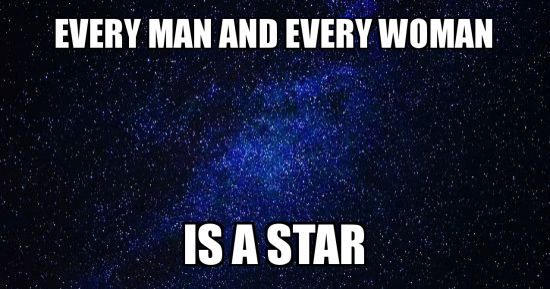Going to PantheaCon this year reminded me that connecting is why I go to Pagan conventions. I skipped the last two years so I came in with a fresh perspective. I’m aware of the conflicts and negative experiences people have reported in the last several years. People fear talking about these and even fear talking about enjoying the event! I was very interested learn what is happening for myself. This year I realized how much I have come to depend on the connections I make at conventions and festivals, including connecting first hand with conflict.
PantheaCon is large. On a normal year two to three thousand people attend the con. I suspect the winter storms affected attendance and these numbers were down a bit this year, but it’s still a lot of people, from nearly every magical tradition imaginable. Because it is so big people attend from around the country. That diversity offers a lot of chances for connection.
Connecting with friends
I committed to attending this year to sit on a panel organized by a friend. The panel was on theurgic activism which is my spiritual center. My theurgic colleagues have been talking to each other on a podcast and have all been nourished by the conversation, so we said, let’s meet in person! Because the panel brought us together I was able to spend a lot of time in the company of other theurgists.
I do meet with most of these people separately. PantheaCon is the place where I can meet with many of them at once, and some people I only see at the event. On the other hand there are people I wanted to see who weren’t able to come because of the expense of travel, so I am aware that this is a privilege not available to everyone.
Connecting with new people
Walking through the hospitality suites at PantheaCon is a tour of the magical communities. I spent some time in the Thelemic hospitality suite of course! The Llwewllyn suite is my home base with friends and colleagues. The Coru Cathubodua suite was new to me and I had the chance to step into their temple, possibly the most elaborate at the event. I make it a point to stick my head in any of the hospitality rooms working for inclusiveness, including the Alliance for Inclusive Heathenry and the Tree of Trads. I think I had the longest conversation with new people at the Divination Hospitality suite. A Tarot deck exchange is an idea whose time has come!
New to me this year were the number of women who came up to me and identified themselves as Shakta students. I started working with a Shakta teacher this year and this is intensely private so it was a joy to connect with others in the tradition. I learned so much about diversity in the lineages as well as how similar we are. There are only a few women teachers in the west, most coming out of Kamakhya temple, so if we’re not actually sisters we’re certainly cousins. The women I met are all amazingly centered and radiant.
Connecting with people interested in my work
As a magical writer and ritualist I work to bring fluidity to gender polarity traditions and address white supremacy. It’s vitally important for me to bring that work out to refine it to make sure it meets the needs of the community. I was surprised and grateful that so many people engaged with my presentations. I always learn something and it makes the work more responsive. Thank you all, sincerely.
Connecting with culture bearers
Through social justice work I have become aware of how many cultures have contributed to the Western Magical Tradition. It is important to me to acknowledge these contributions and acknowledge the fact that they were not always voluntary; my forebears in the tradition incorporated elements without stopping to ask whether this was appropriate, and this process continues today. PantheaCon offered an opportunity to hear from culture bearers first hand.
Jewish-friendly Pagans were invited to attend Havdalah, the service which ends Shabbat. I was humbled to be included in the circle as it was clear participants connected through customs grounded in a community to which I do not belong. There was a sweetness and calm to the ritual that stays with me as a cherished memory. I strongly feel that the ceremonial community needs to enter into dialogue with the Jewish Pagan community and this is a priority for me this year.
As a writer Saraswati is my devi, so I could not miss the chance to attend a Saraswati puja. I have attended temple puja in a Hindu context and conduct householder ritual myself. It was interesting to experience a householder puja conducted by Hindu women in a Pagan context. This is such a natural connection I hope that many more presenters will offer pujas in the future.
I learned so much from the panel on indigenous culture organized by Starhawk. The panel included Amethyst Faria and Kanyon Coyote Woman Sayers-Rood. If we’re sincere in our commitment to the earth it makes sense for settlers to connect with the native people of the land where we live. Kanyon Coyote Woman in particular spoke to the interaction of the local Pagan community with natives. She encouraged people who have learned native customs and want to teach these to check with their teachers to be sure this is appropriate. For people still struggling with how to think and talk about all this she made the idea easy and clear: “Nothing about us without us”.
Connecting with conflict
There is more than one conflict between PantheaCon attendees and between the organizers and attendees. Founder and director Glenn Turner addressed some of these directly in her update on PantheaCon 2018 issues. She also spearheaded a conversation at PantheaCon itself called “Healing the Community”. This had four parts spread out over the event. I attended part two. A team of facilitators conducted the sessions.
The session started with posting large sticky notes with the agreements made in the first session. I remember a few, “respect the speaker” and “speak with vulnerability”. This is normative to me – many social justice groups begin conversations or long term relationships with agreements. My chapter of Showing Up for Racial Justice has permanent sticky notes listing “one speaker at a time” and “speak with I statements” and “share the air”, that is, be aware of how much time your comments are taking and support the speech of others.
The session then broke out into small groups of people who discussed responses to questions. I don’t remember any of the questions. I do remember the sense of being able to speak and also be heard. What I find in activist work over and over is that telling our stories to each other bridges differences. Taking the time to listen, and speaking with vulnerability, is the key to connecting.
The session ended up as a single large group answering questions. I was introduced to a new idea, stacked conversation: the moderator called on people in reverse order of people who usually speak. In any given group people with power, men and white people, talk over people with less power, women and people of color. The moderator acknowledged that she could not know the life circumstances and designation of every person, the process is imperfect, but she would do her best.
This worked for me. I loved being able to hear from women of color first! Those are the voices I most often want to hear. Women of color who take the time to show up to meetings like this are the most experienced in handling tough issues and have many ideas and tools. I want to honor that. I also love the chance to participate in a bit of restorative justice.
This session ended with a woman saying that we hadn’t yet gotten to the topics we were there to discuss. Specifically, in the past she was able to attend woman-only rituals with women like herself. When trans women were excluded from these rituals the con made a policy that all rituals must be public. The moderators agreed that this was one of the conflicts and promised that would be the subject of the third conversation. Now that we had agreements and some experience in conversation we could move on to having the specific conversation about the various conflicts.
I wasn’t able to attend the third session, instead I met with a dear friend who felt unwelcome at the event but made the time to go to the hotel to see me. Later I caught up with a moderator who said that the conversation about the conflicts did happen, specifically including the woman-only-ritual conversation, and people heard each other’s stories. Session four intended to brainstorm policies that need to be developed for future events.
I hope that conference organizers will post the agreements from session one and the list of policies to develop from session four. I definitely see the need for a set of agreements. I talked to two people who reported conflict incidents. One person participated in a group conversation where the moderator was shouted at. Another person reported having been shouted at while attending a workshop. There is a place for calling out, a specific methodology which requires grounded vulnerability. There is also a lot of unleashed anger in American culture right now, from all sides of the political spectrum, and a sense that it’s okay to vent and name call. An agreement to listen respectfully and speak with vulnerability is a good idea for the whole event.
From my professional and activist experiences I know that the only win-win conflict resolution strategy is conflict. There are several win-lose options: withdrawal, where the person withdrawing loses the ability to participate. Forcing, where one party gets what they want and the other party does not. Smoothing, which suppresses the conversation and results in forcing or withdrawal. For both parties to get what they need you have to step in and actually have the conversation. That’s the option I chose.
I very much appreciate that PantheaCon made the conversation available. As the moderator said, it may not be a perfect process, but it is the process that keeps the community moving forward. Connecting with that process helps me continue to connect with PantheaCon. I am looking forward to the festivals I’m attending this summer and hope to connect with the conversations there too.



